San Clemente – Via San Giovanni in Laterano
The Basilica of San Clemente, less than a block away from Hotel Lancelot, is one of the most fascinating sites in Rome and is one of one of the best examples of “architectural layering” covering 2000 years of history. Travel back in time to explore the Basilica of the fourth century and then descend into the world of Rome in the first century where there is still a pagan temple dedicated to Mithra.
If you proceed through the 12th-century nave, pass the brilliant gold mosaics of the apse and across a pavement of swirling pre-Cosmati marble inlays, you come to a side stair that leads down to the cavernous labyrinth of two earlier cult sites, a 5th century Christian basilica and beneath it a 2nd-century Mithraeum, for the cult of Mithras, a god of Persian origin usually depicted slaying a bull.
This church is filled with wonderful treasures to be discovered. To the right of the entrance the 15th frescos by Masolino da Panicale in the Chapel of Saint Catherine are not to be missed, this was one of the earliest Renaissance work in Rome and was revolutionary for its time in introducing perspective and a more human representation of Christ.
Turn left when leaving the side exit of St.Clemente, cross the street and turn right into Via dei Querceti and then left into Via SS. Quattro. At the corner you will find a small shrine.
Aedicule housing an image of the Madonna
At the foot of the slope leading to SS.Quattro Coronati there is possibly one of the most ancient sacred images in the streets of Rome. The shrine is located along the Pope’s procession route to S. Giovanni in Laterano. The Madonna is most likely a 15th century painting, though documents from the 10th century already refer to the existence of this image.
Continue up the hill on Via SS. Quattro Coronati. At the top of the hill is the church of Santi Quattro Coronati.
Santi Quattro Coronati
The Santissimi Quattro Coronati basilica dates back to the 5th century.
The church, together with the adjacent convent, preserves its medieval character. When viewed from the apse, at the corner of Via dei SS. Quattro and Via dei Querceti, its function as a fort to defend the Lateran, that was then the papal residence, is clearly seen.
The silent and beautiful cloister with delicately carved pillars and 12th century fountain, are a silent and timeless refuge and if you happen to visit around 6pm you will hear the celestial voices of the cloister nuns singing the evening vespers.
The ‘Parlatoio’ – a tiny chapel with 12th century frescos – is well worth a visit. The chapel is on the right of the inner courtyard. You will need to ask for the key for which a small donation should be offered.
Continue in the same direction along Via SS. Quattro, past the Irish College until you come to a large square, Piazza di S. Giovanni in Laterano. On entering the Piazza on your immediate right is the Ospedale di San Giovanni.
Ospedale di San Giovanni in Laterano
The hospital was founded by Innocentius III in 1204 and was extensively rebuilt by Pope Sixtus V. Pope Sixtus also wanted to build a direct route from S. Giovanni to S. Peters and had ordered the demolition of the Colosseum. Fortunately he was dissuaded from this. San Giovanni – Addolorata is still one of the main hospitals of Rome. The old ward is now used as the public reception area. Note the medieval entrance to the hospital in the street leading to the Colosseum.
On the opposite side of the piazza is the Basilica of San Giovanni in Laterano.
San Giovanni in Laterano
Referred to as the “Mother of all churches in the world”, the Basilica of St. John Lateran constitutes the perfect linkage between the pagan and Christian eras. The Basilica stands on the grounds of a site built by the Emperor Constantine around 314.
It was built for public meetings and the administration justice, and with the spread of the new faith it was turned into a imposing ecclesiastical building, capable of welcoming large congregations.
Prior to the 14th century when the Papacy moved to Avignon this was the Pope’s Holy See.
Repeatedly damaged, often as a result of fires, little remains of the original basilica was progressively restored and embellished over the centuries.
Behind Alessandro Galilei’s imposing façade surmounted by 15 huge statues, lies Borromini’s magnificent interior, commissioned by Pope Innocent X for the Jubilee Year in 1650.
Across the street from the Basilica of San Giovanni is the Scala Santa. It is said that Helena, Costantine’s mother brought these stairs from Jerusalem around 326.
Scala Santa – Holy Stairs
According to the Catholic tradition, they are the steps leading up to the praetorium of Pontius Pliate in Jerusalem on which Jesus Christ stepped on his way to trial during the events known as the Passion. For centuries the Scala has attracted pilgrims who wish to honor the Passion of Jesus by praying and climbing the 28 steps on their knees.
Exit the piazza the same way you entered it. Bear left into Via S. Stefano Rotondo. There are many interesting features of the original hospital to view en route. Along the way you will see the remains of the roman aqueduct ‘Acqua Claudia’ which carried water to the Palatine. Just before coming to the next piazza, on the left is the entrance to the church of Santo Stefano Rotondo.
Santo Stefano Rotondo
This ancient 5th century church with it’s rare circular plan was inspired by the church of the Holy Sepulchre in Jerusalem. The original plan and architectural form were amazingly complex, and raise many unanswered questions about the building’s original function.The extraordinary hall is encircled by 22 Ionic columns. Most impressive are the cycle of frescoes that were executed in 1583 on the inner wall, depicting the suffering of martyrs in gruesome detail.
The actual site of the church was previously the Castra Peregrina, which were the barracks housing Roman soldiers detached from provincial legions for special service in the city.
Turn left out of the church and continue in the same direction as before until you come to Largo della Sanità Militare and turn left up the hill towards the church of S. Maria in Dominica.
There are many interesting things to see in this area.
Maria in Domnica
The church is one of the oldest deaneries in Rome, rebuilt by Pope Pasquale I in 817.
The portico was later built by order of Cardinal Giovanni de’ Medici (who later became Pope Leo X). The mosaic work in the interior is worth a visit.
In front of the church a boat shaped fountain, the “Navicella “ is a copy of the Roman original found in the area. The theme of the little ship appears again in the beautiful late Renaissance wooden ceiling of the church.
On the way to the church you can also see the aqueduct of Acqua Claudia, the entrance to Villa Mattei, S. Tommaso in Formis and the Arch of Delobella.
These medieval buildings were part of the hospital annexed to the church of S. Tommaso in Formis. This church belonged to the Trinitarian order which was devoted to freeing Christian slaves. The mosaic medallion dating form the 18th century shows Christ between a white and a black slave.
Next to the S Maria in Dominica is the entrance to the Park of Villa Celimontana.
Villa Celimontana (Villa Mattei).
Villa Celimontana was built in 1582 by Ciriaco Mattei and is also known as Villa Mattei. Today the villa houses the Home of Geography-Società Geografica and is a public park. The villa’s gardens offer many delightful walks and vistas.
The next site of San Giovanni e Paolo can be reached either through the park’s northern exit or by returning to Largo della Sanità Militare and proceeding through the arch in the aqueduct.
San Giovanni e Paolo
The square has hardly changed since medieval times.
The portico dates from the 12th century and is embellished by columns of Roman origin. The chapel with the dome is a 14th century addition. Excavations beneath this church have revealed Roman houses of the first and second centuries used as places of Christian worship.
The bell tower is typical of many medieval churches in Rome. The tower was built on the foundations of a Roman temple dedicated to the emperor Claudius. The tower is decorated with ceramic dishes from Spain (at the time under the Moors) and is decorated with inscriptions dedicated to Allah.
On the side of the church going down the hill is the entrance to the Roman Houses.
Roman Houses beneath S. Giovanni e Paolo
Beneath the church, excavations have revealed a complex of rooms, shop fronts and streets dating back to imperial times. There are about 20 rooms, some of which are decorated with frescos from the third to the twelfth centuries. The excavations were started in 1887 by Padre Germano and are opened to the public –
Continue down the hill through the arched buttresses. The name of the street – Clivo di Scauro – dates back to Roman times. At the bottom of the hill you will find the church of S. Gregorio Magno on your left.
San Gregorio Magno
The church originated as a simple oratory attached to the the villa suburbana of Pope Gregory I who converted the villa into a monastery ( 575-80).
Between 1629 and 1633 Cardinal Scipione Borghese commissioned the church to be rebuilt according to designs by Giovannni Battista Soria, who conceived the steps and a new theatrical (false) façade which leads to an atrium and then to the church.
From the broad stairway you can enjoy a wonderful view of the Palatine.
From San Gregorio you can make your way towards the Colosseum by following the tram lines to the right or by descending the stairs to Via di S. Gregorio and turning right. If you like you can turn left to Circo Massimo (where chariot races were held) and go a further couple of hundred meters.
The Colosseum
The Colosseum, in origin known as Amphiteatrum Flavium is the largest amphitheater in the world. The Coliseum took the place of the lake in Nero’s gardens. Its construction begun under Vespasian in 72 A.D. and it was inaugurated by the Emperor Titus Flavius 80 A.D. In ancient times it was used for shows in gladiator fights, fights with wild beasts, mock naval battles, and could hold between 50,000 and 75,000 spectators. The Colosseum soon became the symbol of the city and, in time, the symbol of Rome’s right to eternity.
The earthquake of 1349, caused serious damage and the collapse of the external southern side of the amphitheater. During the Middle Ages the influential Frangipani family built a residence in the Colosseum that was later demolished, however the Colosseum continued to be occupied by other homes for long periods.
Over the years the interior of the amphitheater was repeatedly looted of marble and stone that were then used in the construction of many churches and buildings between the fifteenth and seventeenth centuries.
In 1749 Pope Benedict XIV consecrated the Colosseum as a holy place where the first Christians had suffered martyrdom. Even today, at Easter, the Pope celebrates the blessing Urbi et Orbi, that in Italian means “to the city (Rome) and to the world” with a solemn night procession around the Colosseum.
From the Via Sacra, a narrow street near the Arch of Constantine, you reach the entrance to the Roman Forum. You can reach the forum entrance from Via Sacra, a small lane near the Arch of Constantine.
The Palatine and Roman Forum
The Roman Forum and the Palatine hill are next to the Colosseum and you may enter these sites with the same ticket as for the Colosseum.
The Roman Forum was the central area around which ancient Roman civilization developed.
The Palatine Hill is the most central of Rome’s seven hills. It is from the latin “Palatino” that the word “palace”originates. Both sites are extraordinarily beautiful and poetic with the ruins of the Imperial past scattered amidst the exuberant Roman greenery.
Leaving the Forum, head back towards the Colosseum towards Via Labicana. Turn left on the stairs up to Via Fagutale, which runs along Piazza S. Pietro in Vincoli.
San Pietro in Vincoli
The basilica of San Pietro in Vincoli, St. Peter in Chiains, owes its name to the chains (from Latin vincula, chains) preserved in the reliquary under the main altar, which according to tradition, were used to bind St. Peter while imprisoned in Jerusalem and in the Mamertine prison.
This church also houses the magnificent statue of Moses by Michelangelo.
From here go down Via Eudossiana and enter the park overlooking the Colosseum. Follow the signs for the entrance to the Domus Aurea excavations.
Domus Aurea – Nero’s Golden Palace and Colle Oppio
After the fire of 64 ad, which destroyed much of the Centre of Rome, the Emperor Nero built a new residence with walls covered with marble and decorated with gold and precious stones, thus the name of Domus Aurea -Golden Palace.
The Park of Colle Oppio, in which the Domus Aurea is set, offers unforgettable views of the Colosseum, the Palatine Hill, the basilica of San Clemente and Santi Quattro Coronati.
Stop by the little kiosk bar to enjoy the beautiful view in the shade of pine trees.
Return to the Hotel through the park walking away from the Colosseum. Leave through the large staircase which descends to Via Labicana and cross over to Via Celimontana. Continue for two blocks and turn left on to Via Capo d’Africa.
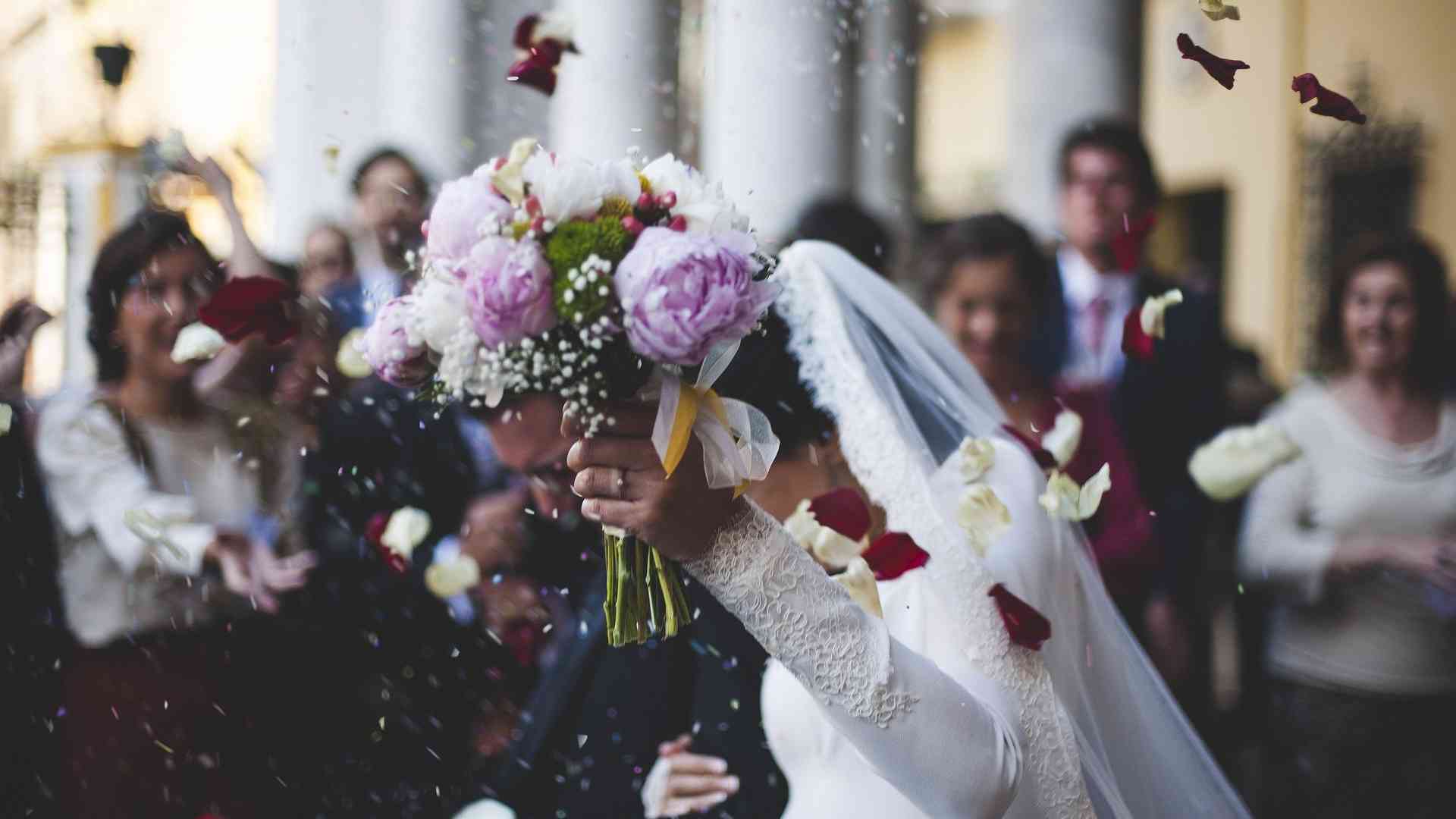

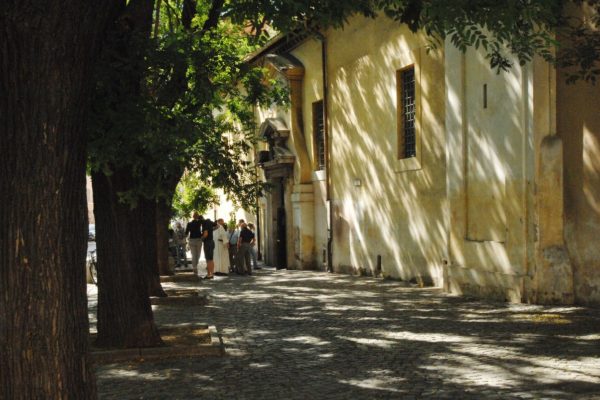
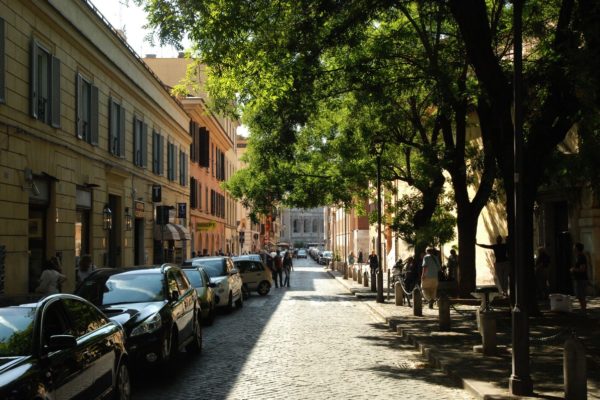
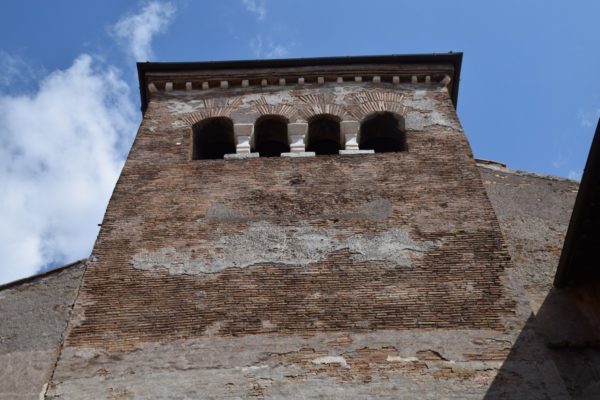

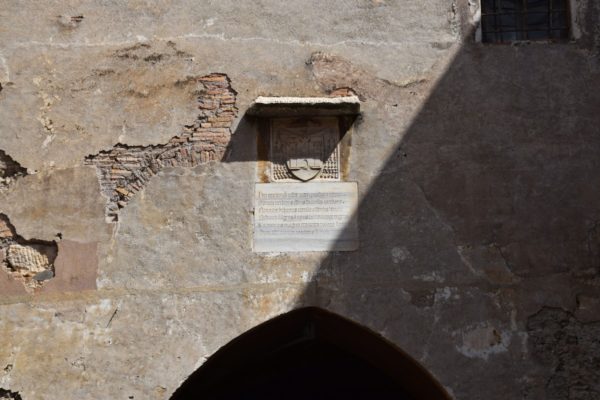
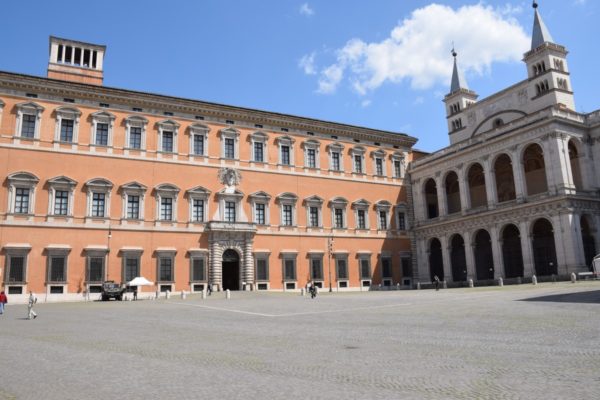
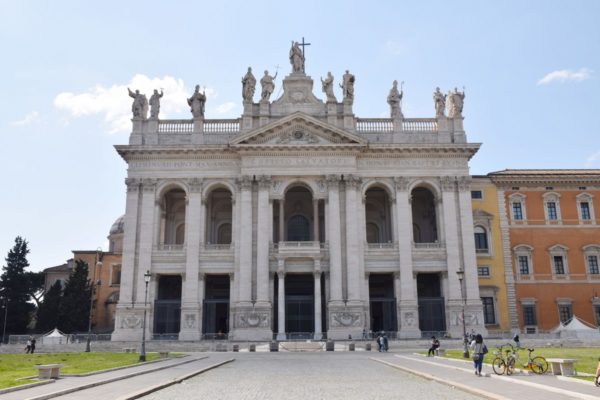
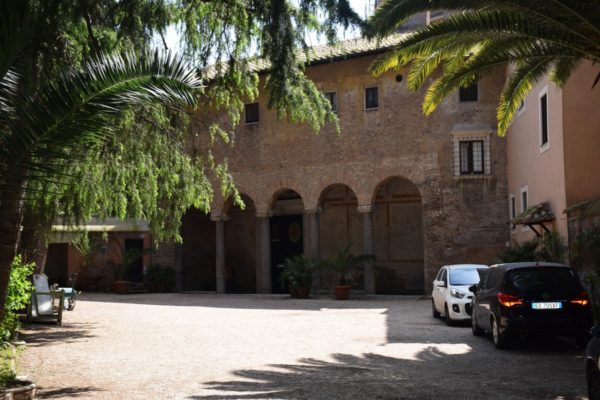
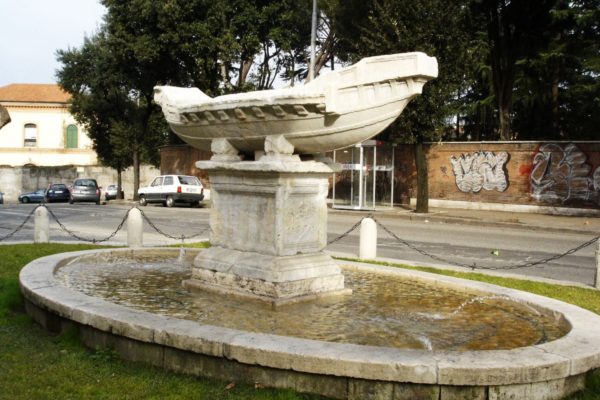
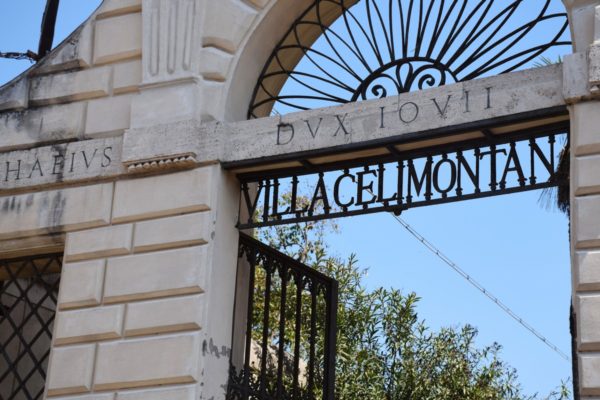
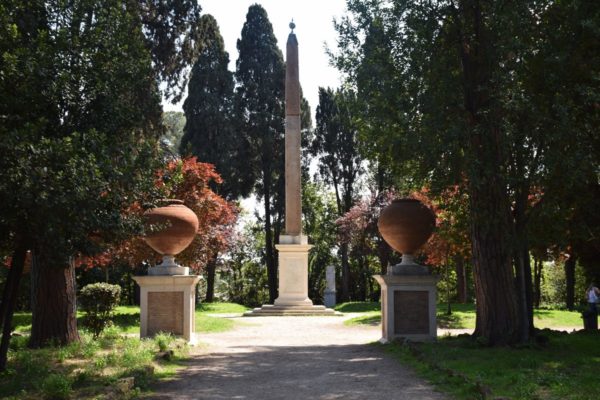
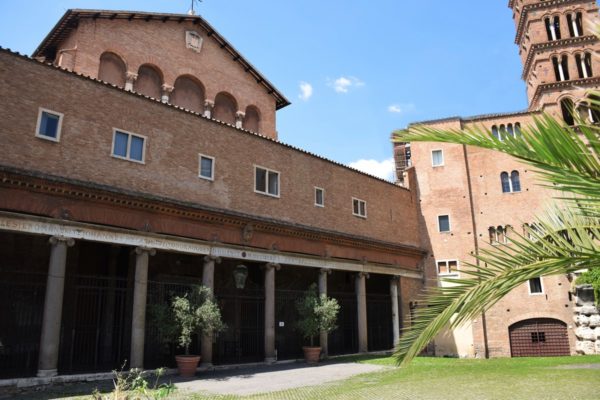
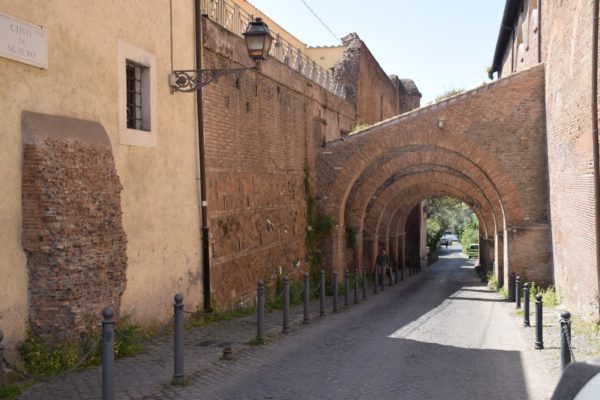
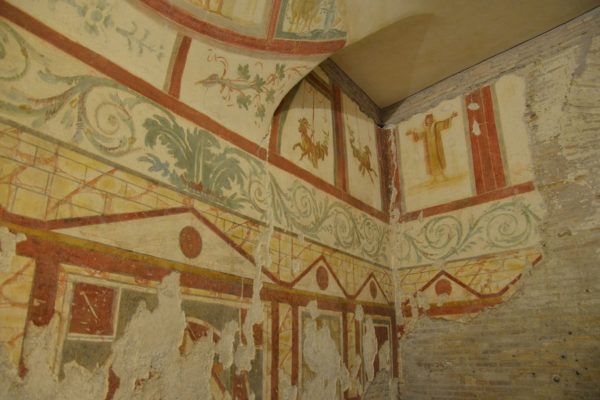
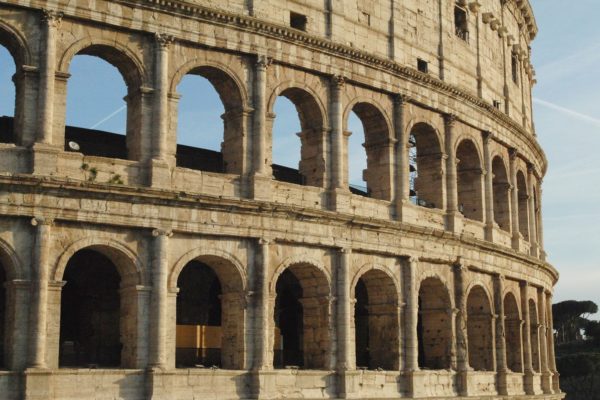
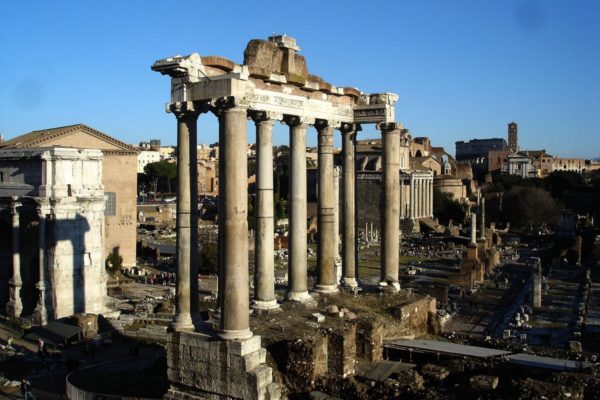


 NEWS AND EVENTS
NEWS AND EVENTS



